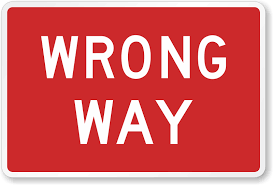Capping or taxing ride-hailing services isn’t going to solve NYC’s congestion problem
New York’s City Council is moving ahead with a package of measures designed to cap the number of ride-hailed vehicles, like Uber and Lyft, as a way of addressing the city’s growing congestion problem.
This is both a mistake and a blown opportunity. Just a few months ago, New York seem poised to do the one thing that we know would address congestion: price the use of its streets. That measure foundered, due in part to the ongoing feud between New York Governor Andrew Cuomo and NYC Mayor Bill de Blasio. Instead, its taking the politically expedient (but wrong-headed) position that ride-hailed vehicles alone are responsible for congestion, and that taxing them or capping their numbers will somehow resolve congestion problems.
In some respects, this re-capitulates the historical evolution of taxis in New York. Initially, taxis were un-regulated, and they flooded city streets. That led the city to implement the medallion system which strictly limited taxi numbers for decades, and which led to medallion owners reaping huge profits from the limited supply. The entry of Uber, Lyft and other ride-hailing services effectively evaded the medallion cap, providing vastly more service (including to underserved areas of the city) and caused medallion prices to collapse. Not surprisingly, yellow taxi owners and operators have been urging the city limit the number of ride-hailed vehicles.
While the medallion system was explicit about who had the right to operate in the city, we’ve have seen the details of how the city plans to allocate permission to operate ride hailed vehicles. Will existing license holders be grandfathered? Like medallions, will their licensees capture the value associated with operating in the city?
It’s clear that ride hailed companies are being made the whipping boy of those alarmed about growing traffic congestion. But that’s wrong, as Robin Chase, Paul Salama, and Charles Komanoff have all argued. It’s not just ride-hailed traffic that causes congestion, its all traffic.
The cap on additional ride-hailed vehicles is unlikely to do anything to resolve the congestion problem. New York University’s Eric Goldwyn has a clear explanation as to why: First, the cap doesn’t reduce the number of ride-hailed vehicles. Second, the problem isn’t just, or primarily due to ride-hailed vehicles.
The fundamental reason New York City’s street’s are increasingly clogged is because they aren’t priced appropriately. By giving this valuable resource away, essentially for free, we guarantee that it will be jammed to capacity. The only plausible solution is some form of congestion pricing, which would give users incentives to use other modes (like transit) and would also provide the city with the resources needed to make the transit system more frequent and reliable.
A recent report from Bruce Schaller makes much of the supposed burden ride-hailed cars impose by traveling empty in the city. The NYC proposal includes caps and utilization requirements designed to reduce this deadhead travel, but the most efficient way to encourage greater utilization is to impose a congestion fee. A car takes up the same amount of space on a city street whether it is carrying a paying fare or not, and whether it is a ride-hailed vehicle, a taxi or a privately owned vehicle. If you want to reduce congestion, the way to do it is to give all of them an incentive to use the street efficiently.
Caps and Regulation are a dead end policy approach
The big problem with the approach of capping and taxing ride-hailing services is it takes transportation policy down a dead end route. As we’ve noted with medallions, those who acquire property rights under a capped system have strong incentives to oppose any changes that would lower the value of their investment. A key part of the new regulatory system for ride-hailed vehicles will be an inherently complex system of “utilization regulations” designed to make sure that ride-hailed vehicles don’t travel too many miles without paying passengers. (Never mind that they have a strong financial incentive to get as many paid miles as possible, and that the city probably doesn’t care about deadhead miles at 5am as much as it does at 5pm). Creating one tier of regulations like the caps or utilization requirements, invites subsequent rounds of regulation to deal with the problems they create: already, according to Streetsblog, NYC is considering further regulations to deal with the likely problem that ride-hailed vehicles, if capped, will tend to concentrate their services in the most lucrative markets, effectively reducing access to under-served outlying boroughs and low income neighborhoods.
There’s another, more subtle effect of taking this regulatory route: politically, and in the public discourse, it reinforces the notion that ride-hailing is the cause of congestion. This framing invites continued constraints on ride-hailing when these measures don’t reduce congestion, and makes it that much harder to have a broader discussion about how to solve this problem.
We don’t get many opportunities to rethink the way we price and regulate the street system. Once we head down this road, it’s likely it will be another decade or more before we can have a serious discussion of congestion pricing, which is the only strategy that’s likely to make a meaningful difference.


